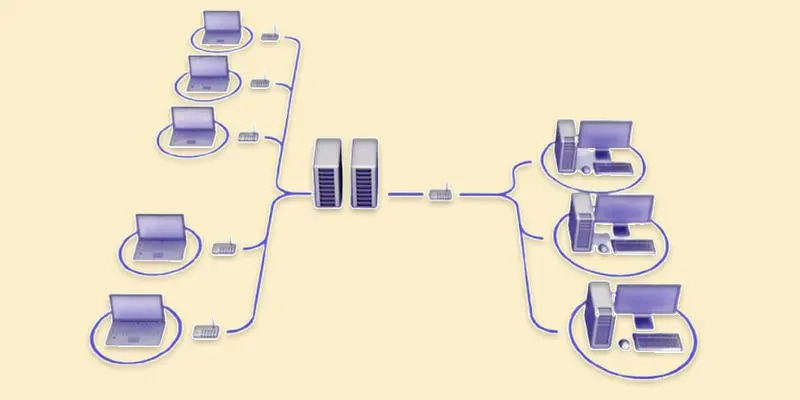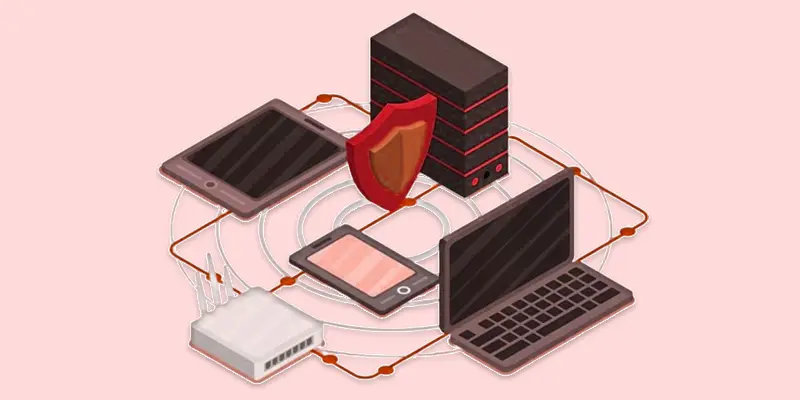Network Management Protocol SNMP | Key Components, Versions, and Examples
Published: 7 Jul 2025
Network Management Protocol SNMP
Have you ever wondered how big networks are watched and managed without someone checking every device? That’s where SNMP (Simple Network Management Protocol) comes in. It helps IT teams keep an eye on computers, routers, and other devices from one place. SNMP makes it easy to spot problems early and fix them fast. Let’s learn how this smart protocol works in simple words!
Understanding the Basics of SNMP
Simple Network Management Protocol is what SNMP stands for. It is a collection of guidelines that facilitate communication between computers and other devices on a network. SNMP is like a helper that collects information about devices—such as if they are working well or facing issues.
How Does SNMP Work?
Think of SNMP like a teacher in a classroom. The SNMP Manager is the teacher, and all the computers, printers, and routers are the students. These students have little reporters called agents who share updates with the teacher. The teacher (manager) uses this info to see who’s doing fine and who needs help.

Key Components of SNMP
SNMP works smoothly because of three main parts. Let’s break them down in a fun and easy way!
SNMP Manager
The manager is like the boss. It sits in one place and checks on all the devices in the network. It asks, “Are you okay?” and waits for a reply. If a device has a problem, the manager finds out quickly.
- Example: Imagine your school principal checking if every classroom light is working—without leaving the office!
SNMP Agent
The agent is a tiny helper inside every device (like a printer, router, or switch). Its job is to keep track of what’s going on in that device. It answers questions from the manager and sends updates.
- Example: If your printer runs out of paper, the agent tells the manager, “Hey! I need more paper!”
MIB (Management Information Base)
MIB is like a notebook where agents write all their updates. It keeps details like CPU usage, memory status, or whether a device is online or offline.
- Simple comparison: Just like a doctor uses a patient chart, the MIB stores health records for each device.
SNMP Versions
Over time, SNMP has improved to become faster and safer. There are three main versions of SNMP. Each one is better than the last.
SNMPv1 | The First Version
SNMPv1 was the very first version of the protocol. It helped network devices share basic information, like whether they were online or offline. It was easy to use but didn’t have much security. Anyone on the network could read the data, which wasn’t safe. Example: Imagine sending a note in class without sealing it—anyone could read it before it reached the teacher.
SNMPv2 | Faster and Smarter
SNMPv2 is the second version of the protocol. It works better than SNMPv1 because it collects more information and does it faster. It also allows the manager to send commands to many devices at once. But the security is still weak, just like SNMPv1. Example: A network admin uses SNMPv2 to quickly check the status of 20 printers in an office, all at the same time, instead of one by one.
SNMPv3 | Safe and Secure
SNMPv3 is the most advanced version of SNMP. It adds strong security features like encryption and user authentication. This means only trusted users can see or change device data. It keeps your network safe from hackers or unwanted access. Example: Imagine locking your messages in a digital safe. Only people with the right key (username and password) can open it and read what’s inside.

How SNMP Helps in Real-Life
SNMP is incredibly useful in keeping networks healthy. It helps monitor devices, find problems early, and save time for IT teams. Let’s look at some real-life ways SNMP makes life easier.
Network Monitoring
SNMP allows you to monitor devices like computers, printers, or routers from a central location. It constantly checks their health and performance. If anything goes wrong, it sends an alert. Example: Imagine you’re in an office with 10 computers. SNMP keeps track of all their performance, telling you if one is running low on memory or has an issue, so you can fix it before it crashes.
Troubleshooting Made Easy
With SNMP, when something goes wrong, you don’t have to guess what’s happening. SNMP sends data straight to the manager, making it easier to identify the problem. Example: If a printer stops working, SNMP immediately alerts you, letting you know whether it’s out of paper or has a connection problem.
Saving Time
Without SNMP, someone would have to manually check every device in the network. But with SNMP, this process is automated. It saves you time and effort. Example: Instead of walking around checking each device, SNMP does the job for you and sends the updates directly to your desk.
SNMP in Action
Let’s take a look at how SNMP works in a real network. Imagine an office with a small network of computers, printers, and a router. SNMP helps keep track of everything, making sure all devices are working properly.
Example Scenario
In this office, there are 10 computers, 2 printers, and a router. With SNMP, the SNMP Manager can monitor all the devices without leaving the desk. The SNMP Agents on each device send updates about their health. For example, if a computer’s hard drive is almost full, the agent will send a message to the manager, which then alerts the IT team to take action.
How It Works
- Step 1: The SNMP Manager sends a request to the devices (computers, printers, routers) asking for updates.
- Step 2: The SNMP Agents on each device respond, sharing information like usage stats or any problems.
- Step 3: If a device is having trouble (like the printer being offline), the SNMP Manager gets an alert and can take action right away.
Tip
For larger networks, SNMP tools like PRTG or SolarWinds make it even easier to track all devices in one place.
Common Mistakes to Avoid
- Using an Outdated SNMP Version: Stick to SNMPv3 for better security and performance.
- Not Securing SNMP Properly: Always set up strong passwords and encryption to protect sensitive data.
- Ignoring SNMP Alerts: Don’t overlook notifications—address problems early to avoid bigger issues.
- Overloading the SNMP Manager: Don’t try to monitor too many devices with one manager. Use multiple if needed.
- Not Regularly Updating SNMP Tools: Make sure your SNMP software is always up to date with the latest features and security patches.

Conclusion about network management protocol
We’ve covered Network Management Protocol SNMP in detail. It’s a powerful tool for keeping your network devices running smoothly, and I highly recommend using SNMPv3 for better security and efficiency. Whether you’re managing a small office or a large network, SNMP helps save time and prevent problems before they arise. If you’re setting up SNMP for the first time, make sure to follow best practices and stay updated on the latest versions. Start using SNMP today, and keep your network in top shape!
FAQS
Computers, printers, and routers are examples of network devices that can be managed and observed using the SNMP protocol. It helps gather information about device health, performance, and issues. SNMP allows network admins to control and fix devices remotely without physically checking each one.
SNMP Network Management in Cisco refers to using SNMP to monitor and manage Cisco network devices. It allows administrators to track device performance, detect failures, and troubleshoot problems. Cisco devices support SNMP to provide real-time data on network health.
To configure SNMP, you’ll need to set up the SNMP manager and agent on your devices. The manager collects data from the agents running on network devices. Simply enable SNMP on your router or switch, set up community strings, and ensure it’s secure by using SNMPv3.
SNMP helps network administrators easily monitor device performance and address issues before they become major problems. It saves time by allowing remote access to devices and alerts administrators when something goes wrong. SNMP is essential for keeping networks healthy and running smoothly.
The part that keeps an eye on specific network devices is called the SNMP Agent. It runs on each device, collects performance data, and sends it to the SNMP manager. The agent makes sure the device stays updated with its current status.
SNMP uses the UDP (User Datagram Protocol) for communication. It sends messages between the SNMP manager and the agent using UDP ports. This helps in quick communication and monitoring without waiting for a response, making it efficient for network management.

- Be Respectful
- Stay Relevant
- Stay Positive
- True Feedback
- Encourage Discussion
- Avoid Spamming
- No Fake News
- Don't Copy-Paste
- No Personal Attacks

- Be Respectful
- Stay Relevant
- Stay Positive
- True Feedback
- Encourage Discussion
- Avoid Spamming
- No Fake News
- Don't Copy-Paste
- No Personal Attacks





